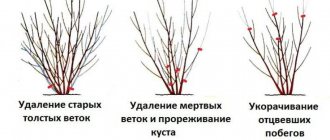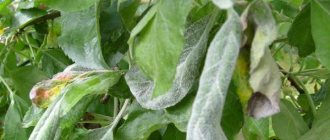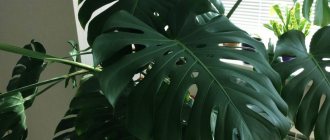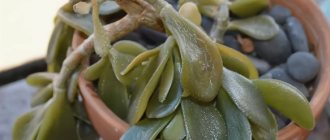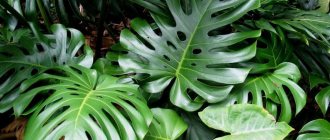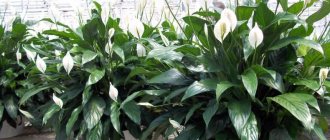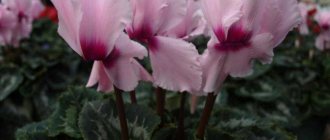Author: Elena N. https://floristics.info/ru/index.php?option=com_contact&view=contact&id=19 Category: Houseplants Published: December 09, 2013Last edits: January 11, 2021
- Velvety Peperomia / Peperomia velutina
Botanical description
Peperomia (lat. Peperomia) is a representative of plants from the Pepper family. At the moment, more than 1000 species of peperomia are already known, which grow under natural conditions in the tropical zones of America. The name of the plant consists of two words: peperi (Greek) - pepper, and homois (Greek) - similar. Representatives of peperomia are subshrubs, evergreen perennials or annual herbs. The shoots of the plants are thick, the leaves are leathery, dense, located oppositely throughout the stem. The plant is grown as an ornamental foliage plant, although peperomia blooms with small flowers. The plant is grown both indoors and in gardens (special conditions are created). Some types of peperomia are interesting not only for their leaves, but also for their flowers, but flowering can be achieved when grown under “short days”. Some species are grown as hanging plants. The plant is great for creating flower arrangements.
Peculiarities
South American countries are considered the homeland of this plant. All kinds of peperomia species grow in the tropical habitat of this region. Thus, there are both annuals and perennial specimens. It is noteworthy that the tallest specimens can reach more than 50 cm in height.
The leaves of this plant are usually fleshy and dense. There may be a wax-like plant coating on the top surface.
Currently, there are indoor species of this plant. These flowers are quite easy to grow. Even a novice indoor plant lover can handle caring for peperomia. Each type of this plant has its own characteristics in the structure of individual elements. For example, plants may vary slightly in the shape and size of their leaves.
The color of the foliage also varies. The leaves are elongated, ellipsoidal or oval. Some specimens have rather small (even miniature) leaves, while others have larger ones. There are different types of such flowers based on the appearance of the leaf plate. It can be either flat or corrugated.
During flowering, several inflorescences appear on the flower. It is worth noting that they look rather discreet. Each inflorescence consists of several white flowers. The flower is small in size. Despite such discreet flowering, peperomia still complements the interior of the room well.
White flowers combined with fleshy, dense leaves create a cozy atmosphere in the house. This houseplant is not poisonous. Therefore, it can be placed not only in the living room, but even in the children's room. For good growth, the flower requires enough sunlight, as well as regular watering.
Briefly about cultivation
- Flowering: the plant is grown as an ornamental foliage plant.
- Lighting: bright diffused light. Forms of peperomia with green leaves are not as dependent on light as the variegated varieties.
- Temperature: in summer and spring – about 22 ºC, in winter – 17-18 ºC.
- Watering: during the growing season - abundantly, and in winter the substrate is moistened so that the earthen lump does not dry out.
- Air humidity: normal for residential premises, but in the summer heat it is advisable to spray the foliage early in the morning or in the evening.
- Feeding: every two weeks from spring to autumn with complex fertilizer for decorative deciduous plants.
- Rest period: not clearly expressed.
- Transplantation: up to three years of age, an annual replantation is required, and thereafter - once every two years.
- Substrate: 3 parts of leaf soil and 1 part each of humus soil, peat and sand.
- Reproduction: seeds, leaf and stem cuttings, division of rhizomes.
- Pests: spider mites, thrips, scale insects, mealybugs and nematodes.
- Diseases: stem rot, loss of decorativeness by leaves, falling leaves due to violation of maintenance conditions and improper care.
Read more about growing peperomia below.
Reproduction
This plant is propagated in the following ways:
- generative (by seeds);
- cuttings;
- dividing the bush during transplantation.
Generative method
Suitable for flowering species. Ripe seeds are stored in a cool, dark place until spring. Procedure:
- soil preparation (a mixture of coarse sand and universal substrate);
- place the soil in a shallow container and spill;
- spread the seeds over the surface and sprinkle with a small layer of soil;
- cover with glass or film and place in a bright, warm place. If possible, provide heating;
- ventilate daily for 5 minutes;
- when the soil dries out, spray;
- when 2 adult leaves are formed, plant.
Cuttings
Cuttings can be leaf or stem. The advantage of this method is that the plant takes root at any time of the year. When choosing a cutting, you should pay attention to the presence of growth points; the more there are, the higher the chances of rooting.
Important: Even a leaf from an adult plant is suitable for propagation.
The cutting is placed in warm water or damp sand. When using water, the cuttings are immersed no more than 3-5 mm, otherwise rotting will begin. To speed up the process, the container is covered with glass or film. On average, it will take about a month for rooting.
Propagation by cuttings
Dividing the bush
The bush is divided only during a planned plant transplant. The procedure is the same as for the usual one, only division of the root system is added. It is best to do this with a sharp knife and treat the cuts with charcoal.
Peperomia care at home
Lighting
Indoor peperomia needs bright lighting, but direct sunlight should not be allowed to hit the leaves. When grown on the south side, the plant is placed either in the back of the room, or the light is diffused using paper. When grown on the western or eastern side, shading is not required. On a northern windowsill there may be little light and you will have to resort to artificial lighting. Forms of peperomia with green leaves are shade-tolerant, while those with variegated leaves need more bright light. In winter, the lighting should also be bright.
Temperature
Temperatures should be average throughout the year. In summer and spring, peperomia feels best at home at a temperature of about 22 °C. In winter, the temperature is reduced by literally a couple of degrees, but a drop below 16 °C can lead to illness. Only some types of domestic peperomia can be taken outside, so it is better not to take risks, since drafts are detrimental to the plant.
Watering peperomia
During the growing season, water the homemade peperomia plant abundantly; use soft water, a couple of degrees warmer than room temperature, and settled water. In autumn and winter, watering is reduced, using the rule “it is better to under-water than to over-water,” since excess moisture in the soil leads to rotting of the roots, which is always difficult to combat. If the leaves of the peperomia wither and fall off, this indicates insufficient watering.
- How to care for anthurium (video)
Spraying
For the peperomia plant, air humidity is not an important point in care. Spraying can have a positive effect on the development of the plant, and its absence will at least not cause harm. Spraying from June to August will be beneficial.
Top dressing
Fertilizers use complex mineral fertilizers for indoor plants. Peperomia is fed every two weeks during the spring-autumn period, and once every winter month.
Trimming
The tips of the shoots can be pinched, which promotes better branching of peperomia.
Peperomia transplant
The pot for transplanting peperomia indoors should be shallow, and with each transplant, the next pot should be taken 2-3 cm wider in diameter. Expanded clay or broken bricks are poured onto the bottom of the pot, and an earthen mixture on top, consisting of two parts of leaf soil, and one part each of humus, sand and peat. Until the age of three, peperomia are transplanted annually, and after that - every two years.
Growing from seeds
Sow seeds in March-April. First you need to prepare a mixture of equal parts of sand and leaf soil; this substrate is poured into bowls, into which peperomia seeds are then sown. The container with the crops is moistened (you can spray the soil or pour water through a fine sieve), covered with glass or cellophane, and the temperature is kept at 25 °C. The glass or film is removed from time to time, the container is ventilated and the soil is moistened. When the second developed leaf appears on the peperomia flower seedlings, the seedlings dive into a box with the same substrate at a distance of 2 cm from each other. Lighting should be bright and long, but without direct sunlight. When the plants become stronger, they are planted in individual pots 7 cm in diameter. A drainage layer is poured onto the bottom of the pot, and a substrate of sand, turf soil, leaf and peat (1: 1: 2: 2) is placed on top. Next, they are cared for as for an adult peperomia.
Propagation by stem cuttings
For cuttings of indoor peperomia flowers, make a mixture of equal parts of sand, peat and humus. Both apical and stem cuttings are suitable. Depending on the length of the internodes, it is necessary that there are from one to three nodes on the cutting. Cuttings take root both in water and in the substrate (see above). The cuttings are planted in soil and covered with glass, the temperature is maintained at 25 °C, and in less than a month the cuttings should take root. Peperomia cuttings are planted in individual pots and cared for as for adult specimens.
- The first and very important fertilizing of tomatoes - when and what to fertilize?
Leaf propagation
To propagate homemade peperomia by leaf, you need to use a sharp knife, or better yet, a blade, to cut off a healthy leaf (there should be no signs of disease, no pests, no damage). The petiole of the leaf is kept short. The leaf is planted in a mixture of peat and sand, placed in water or rooted in living sphagnum moss. Rooting will be faster and more likely to be successful in a greenhouse. The water must be changed every 1-2 days. After 3-4 weeks, the peperomia leaf will take root, after which it is transplanted into a pot 7 cm in diameter. When the plant becomes stronger, it is given the usual care.
Dividing the bush
If the peperomia bush has grown greatly, it can be divided into 2-3 small ones. This is done in the spring, combining replanting with root division. Separate the plants carefully so as not to damage the root system. The soil is taken as described in paragraph Transplantation (see above). We pour drainage into the bottom of the pot; the pot itself should be taken a little smaller.
How to water
- Watering. Peperomia obtufolia is watered rarely - once every ten days. Moderate watering, especially in spring and summer. Before the next watering, be sure to check that the earthen lump in the pot is dry. We water with warm water. When watering, protect the leaves from drops of moisture. The winter season is a time of rest, so we reduce watering to a minimum. We wait for the earthen lump to dry out. When watering, do not allow the soil to become too waterlogged. We water small-leaved and low-growing peperomia constantly and moderately, with the exception of the winter season - we water with a minimum amount of water. The watering process must be carried out carefully, avoiding stagnation of moisture and drying out of the soil.
- Feeding. We feed peperomia once a month. We fertilize during the period of active growth and development of the plant. This is the period from March to August. We apply fertilizers every two weeks. It is better to use liquid mineral fertilizers, which are added to water for irrigation. The dosage of fertilizer should be reduced by half than in the instructions. In other words, we reduce it by half. The need for fertilizing can be determined by the young leaves; if they begin to become smaller, then this is a sign that there is not enough nutrition.
When buying a plant, choose a healthy plant. It should not show signs of mechanical damage or damage by pests or various diseases.
Diseases and pests
Peperomia leaves are falling off. The most common options: either keeping the plant at a low temperature, or insufficient watering (drying out the earthen coma).
The edges and tips of peperomia leaves turn brown. In peperomia, these are signs of sudden temperature changes (sharp drops). Another reason is that the plant is in a draft; this should not be allowed.
Peperomia leaves and stems rot. The reason for this is excessive soil moisture. Symptoms appear more quickly if waterlogging is accompanied by conditions below 16°C.
Peperomia leaves wither and wrinkle. Peperomia should not be in direct sunlight. Location on southern window sills can also lead to burns on the leaves.
Peperomia pests. If not properly cared for, peperomia is easily attacked by mites, thrips, nematodes, scale insects and mealybugs. Read how to deal with them in the pests section (see the Plants menu item at the top of the site).
- Myrtle plant (photo)
Planting and replanting peperomia
Until the plant reaches three years of age, it must be replanted every year. The optimal period for the procedure is April. Then you can reduce the frequency of transplants to once every two years.
For peperomia, the following substrate is required:
- Leaf soil - two parts;
- Peat - one part;
- Sand - one part;
- Humus is one part.
Drainage is important. As for the container for the plant, it is better to choose a wide, but not deep, flowerpot. Each subsequent pot should be approximately one and a half times larger than the previous one.
Kinds
Velvety Peperomia / Peperomia velutina
Natural habitat – Ecuador. Representatives of the species are herbaceous perennials. The stem of the plant is pubescent, straight, vertical, dark red in color. Leaf petioles are short (up to 1 cm long). The leaf plate is round in shape, green in color, from the top from the base of the leaf to the top there are five to seven veins of light green color, depending on the variety, the leaves can be either bare or covered with small hairs, the leaves are arranged alternately on the shoot. The flowers are 7-centimeter spikelets appearing from the leaf axils or at the ends of the branches.
Peperomia clusiifolia
Distributed in Venezuelan tropical forests. Representatives of the species are herbaceous perennials. The leaves of the species are dense, petiolate, sessile, dark green in color with a slight shade of red, arranged alternately on the shoot, the length of the leaf blade reaches 15 cm, and a maximum width of 8 cm, the edge of the leaf is purple, the apex of the leaf is usually obtuse, the base is wedge-shaped.
variegata variety has variegated leaves and is not as dense. The edge of the leaf is reddish, closer to the center the leaf is yellow, and near the vein itself it becomes dark green. Not found in nature.
Reddish Peperomia / Peperomia rubella
This species is a herbaceous branched perennial with red thin shoots. The leaves on the shoots are arranged in 4 leaves opposite, the upper side of the leaf blade is green, and the lower side is red, small in size, and has an elongated oval shape. The plant is very decorative.
Peperomia maculosa
The homeland of this species is the tropical mountain forests of the South American continent. Representatives of the species are herbaceous perennials. The shoots are green, covered with brown spots. The leaves are dark green with white veins, grow from the root, grow up to 20 cm in length, ovoid, shiny, rather dense. The inflorescences are brown in color and quite long.
Peperomia marmorata
Grows in Brazil. A representative of the genus is a low-growing herbaceous perennial that grows densely. The leaves are heart-shaped, rounded, green in color with brownish veins extending from the base of the leaf towards the apex.
Creeping Peperomia / Peperomia serpens
This epiphytic perennial grows naturally in swampy forests in the tropical zones of the American continent. Shoots can be hanging, vertical, or recumbent. The leaves are petiolate, the base of the leaf blade has a heart-shaped notch, and the leaf itself is flattened-ovate in shape, can be pure green or have a variegated color. The leaves on the shoots are arranged alternately. Grown as an ampelous plant.
Peperomia blanda
Grows in tropical forests of South America. The plant is epiphytic, perennial. The shoots are densely covered with hairs. The leaves are arranged oppositely on the shoots, three or four at a time, small (up to 4 cm long and up to 1.5 cm wide), oval in shape. The leaf blade is red underneath and green on top.
Gray Peperomia / Peperomia incana
Grows in Brazil. Herbaceous perennials or subshrubs, grow up to 0.5 m in height. The shoots are densely covered with hairs. The rounded leaves grow up to 50 mm in diameter, are dense, covered with white hairs, the leaf blade itself is green, slightly tapering towards the apex.
Silver Peperomia / Peperomia argyreia
Habitat: Brazil and Venezuela. Stemless epiphytic or terrestrial perennials. The leaves are petiolate, petioles up to 10 cm long, with a red tint, growing from the root. The leaves are not pubescent, dense, fleshy, shiny, with 7-9 green veins, between which there are whitish stripes.
Peperomia caperata
This species is native to Brazil. The plant is not tall, only up to 10 cm. The leaves are petiolate, growing from the root, as if rosette. The petioles are ribbed, pale pink. The leaves are covered with veins that are concave on the upper side of the leaf and strongly convex on the lower side. The leaves are green, the veins are brown. The flowers are white spikelets and appear in the summer months. The plant is grown not only as an ornamental foliage plant, but also for its flowers.
Peperomia obtusifolia
Natural habitat - tropical zones of the South American continent, grow both on the ground and on trees. Representatives of the species are herbaceous perennials. The shoots are not pubescent. The leaves are petiolate, arranged alternately on the shoots, dark green in color, ovoid in shape (tapering towards the base and widening towards the apex), up to 8-12 cm long and up to 4-5 cm wide, fleshy and dense. A large number of forms and varieties are grown in culture.

